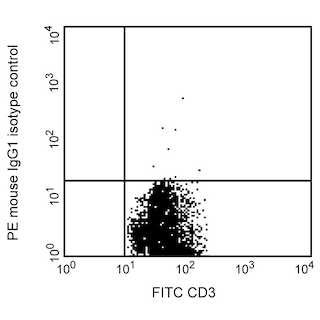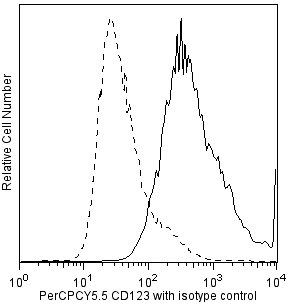-
Training
- Flow Cytometry Basic Training
-
Product-Based Training
- BD FACSDiscover™ S8 Cell Sorter Product Training
- Accuri C6 Plus Product-Based Training
- FACSAria Product Based Training
- FACSCanto Product-Based Training
- FACSLyric Product-Based Training
- FACSMelody Product-Based Training
- FACSymphony Product-Based Training
- HTS Product-Based Training
- LSRFortessa Product-Based Training
- Advanced Training
-
- BD FACSDiscover™ S8 Cell Sorter Product Training
- Accuri C6 Plus Product-Based Training
- FACSAria Product Based Training
- FACSCanto Product-Based Training
- FACSLyric Product-Based Training
- FACSMelody Product-Based Training
- FACSymphony Product-Based Training
- HTS Product-Based Training
- LSRFortessa Product-Based Training
- United States (English)
-
Change country/language
Old Browser
This page has been recently translated and is available in French now.
Looks like you're visiting us from {countryName}.
Would you like to stay on the current country site or be switched to your country?


.png)

Multiparameter flow cytometric analysis of CD85k expression on human peripheral blood leucocytes. Human whole blood was stained with PerCP-Cy™5.5 Mouse Anti-Human CD123 (Cat. No. 558714) and APC Mouse Anti-Human ILT7 (CD85g) (Cat. No. 562355) antibodies and either PE Mouse IgG1 Kappa Isotype Control (Cat. No. 551436) or PE Mouse Anti-Human CD85k antibody (Cat. No. 564181). The erythrocytes were lysed with BD FACS™ Lysing Solution (Cat. No. 349202). Two-color flow cytometric contour plots showing the correlated expression of CD123 versus Ig Isotype control staining (Plot A) or CD85k (Plot B) and Plot C showing CD85k versus ILT7 (CD85g) coexpression patterns were derived from gated events with the forward and side scattered (SSC-A) light characteristics of intact peripheral blood mononuclear cells. The two-parameter flow cytometric plot showing CD85k expression versus side light-scatter signals (Plot D) was derived from gated events with the light scattering characteristics of intact peripheral blood leucocytes. Flow cytometric analysis was performed using a BD LSRFortessa™ Cell Analyzer System and BD FACSDiva™ Software 8.0.
.png)

BD Pharmingen™ PE Mouse Anti-Human CD85k
.png)
Regulatory Status Legend
Any use of products other than the permitted use without the express written authorization of Becton, Dickinson and Company is strictly prohibited.
Preparation And Storage
Product Notices
- This reagent has been pre-diluted for use at the recommended Volume per Test. We typically use 1 × 10^6 cells in a 100-µl experimental sample (a test).
- An isotype control should be used at the same concentration as the antibody of interest.
- Alexa Fluor® is a registered trademark of Molecular Probes, Inc., Eugene, OR.
- Source of all serum proteins is from USDA inspected abattoirs located in the United States.
- Caution: Sodium azide yields highly toxic hydrazoic acid under acidic conditions. Dilute azide compounds in running water before discarding to avoid accumulation of potentially explosive deposits in plumbing.
- For fluorochrome spectra and suitable instrument settings, please refer to our Multicolor Flow Cytometry web page at www.bdbiosciences.com/colors.
- Please refer to www.bdbiosciences.com/us/s/resources for technical protocols.
- Cy is a trademark of Amersham Biosciences Limited.
Companion Products






The ZM3.8 monoclonal antibody specifically binds to CD85k which is also known as Immunoglobulin-like transcript 3 (ILT-3) and Monocyte inhibitory receptor HM18. CD85k is encoded by LILRB4 (Leukocyte immunoglobulin-like receptor, subfamily B member 4) and is expressed as a type I transmembrane glycoprotein. CD85k is comprised of two C2-type Ig domains, a transmembrane region, and a cytoplasmic tail with three immunoreceptor tyrosine-based inhibitory motifs (ITIMs). CD85k is selectively expressed by myeloid antigen presenting cells including monocytes, macrophages, and dendritic cells. CD85k functions as an inhibitory receptor. ILT3 can also function in antigen capture and presentation. It is efficiently internalized upon cross-linking, and delivers its ligand to an intracellular compartment where it is processed and ultimately presented by APCs to T cells. Thus, ILT3 is a novel inhibitory receptor that can negatively regulate activation of APCs and can be used by APCs for antigen uptake. ILT3 expression is upregulated on tolerogenic dendritic cells that can induce regulatory T cells.

Development References (6)
-
Cella M, Dohring C, Samaridis J, et al. A novel inhibitory receptor (ILT3) expressed on monocytes, macrophages, and dendritic cells involved in antigen processing. J Exp Med. 1997; 185:1743-1751. (Immunogen: ELISA, Flow cytometry, Functional assay, Immunoprecipitation). View Reference
-
Dobrowolska H, Gill KZ, Serban G, et al. Expression of immune inhibitory receptor ILT3 in acute myeloid leukemia with monocytic differentiation. Cytometry. 2013; 84(1):21-29. (Biology). View Reference
-
Kim-Schulze S, Seki T, Vlad G, et al. Regulation of ILT3 gene expression by processing of precursor transcripts in human endothelial cells. Transplantation. 2006; 6(1):76-82. (Biology). View Reference
-
Mori Y, Tsuji S, Inui M, et al. J Immunol. 2008; 181(7):4742-4751. (Clone-specific: Flow cytometry, Fluorescence microscopy, Functional assay, Immunofluorescence). View Reference
-
Penna G, Roncari A, Amuchastegui S, et al. Expression of the inhibitory receptor ILT3 on dendritic cells is dispensable for induction of CD4+Foxp3+ regulatory T cells by 1,25-dihydroxyvitamin D3. Blood. 2005; 106(10):3490-3497. (Biology). View Reference
-
Vlad G, Cortesini R, Suciu-Foca N. CD8+ T suppressor cells and the ILT3 master switch. Hum Immunol. 2008; 69(11):681-686. (Biology). View Reference
Please refer to Support Documents for Quality Certificates
Global - Refer to manufacturer's instructions for use and related User Manuals and Technical data sheets before using this products as described
Comparisons, where applicable, are made against older BD Technology, manual methods or are general performance claims. Comparisons are not made against non-BD technologies, unless otherwise noted.
For Research Use Only. Not for use in diagnostic or therapeutic procedures.
Report a Site Issue
This form is intended to help us improve our website experience. For other support, please visit our Contact Us page.